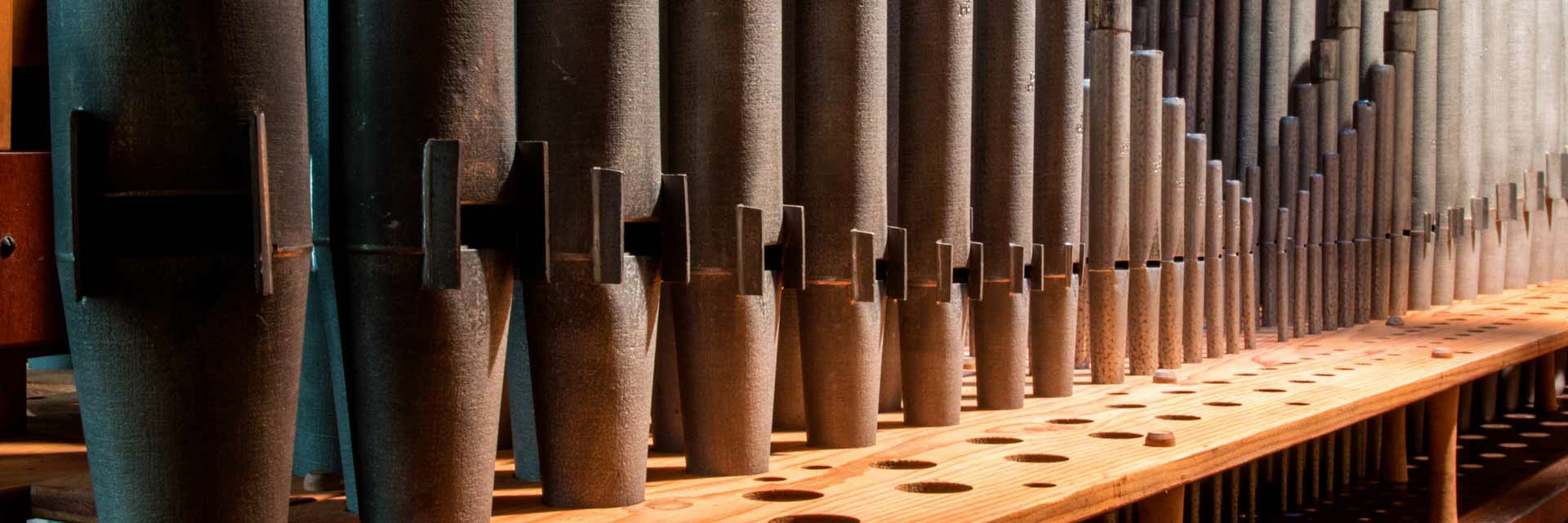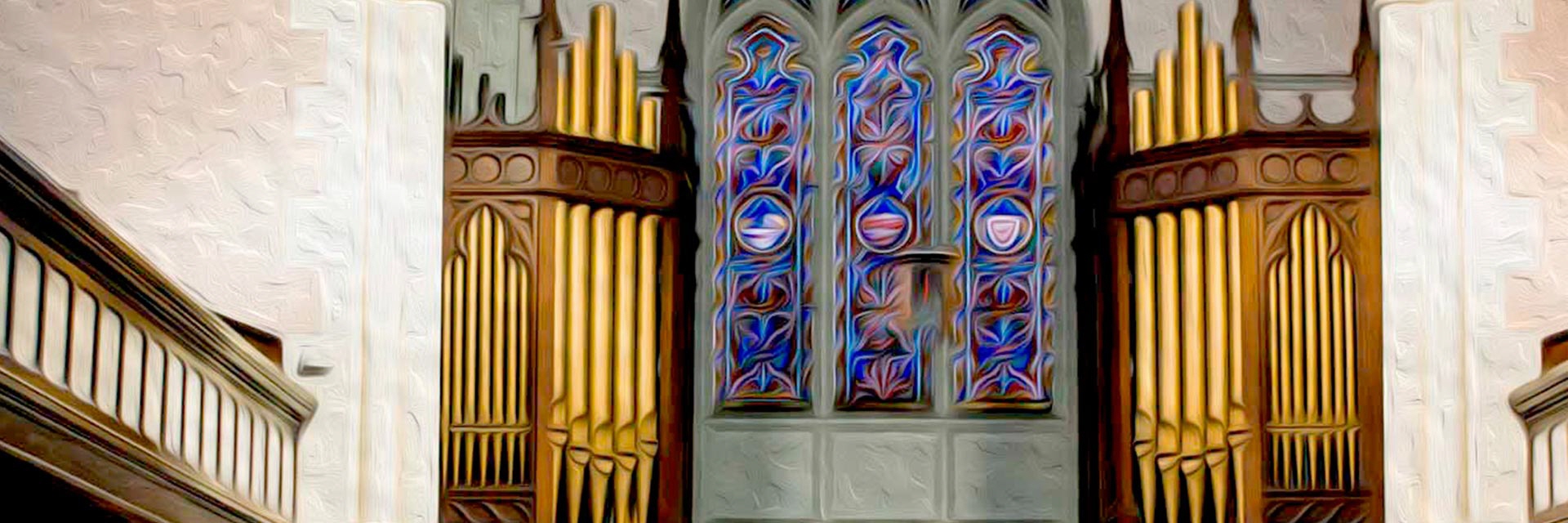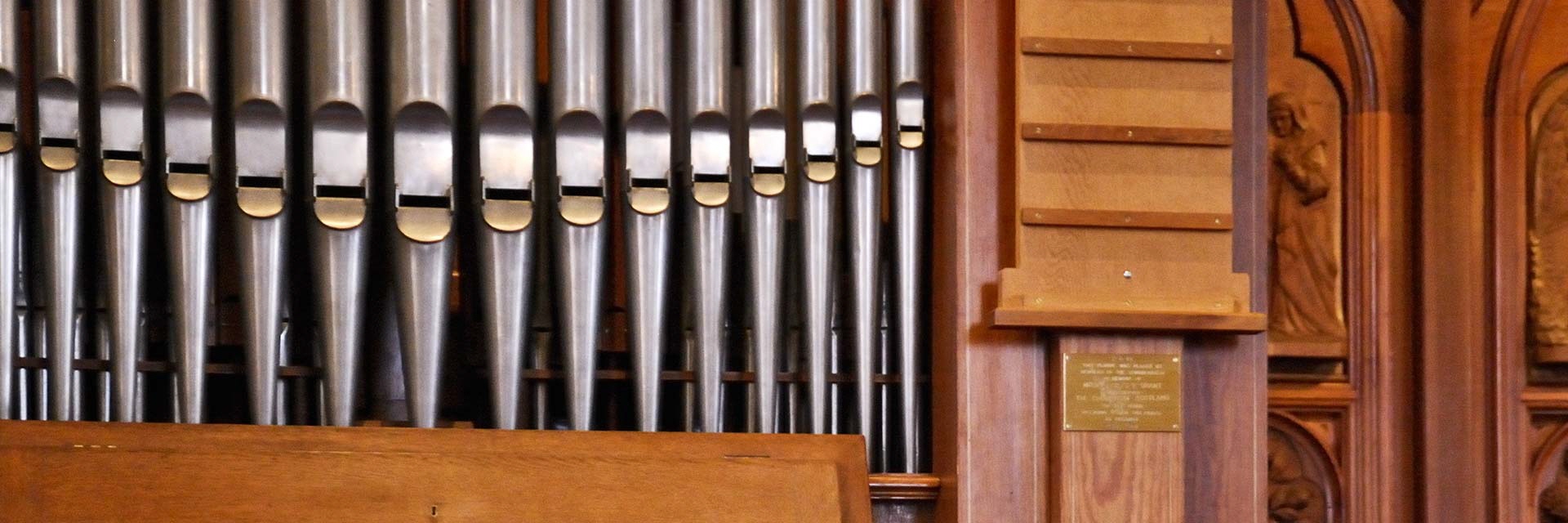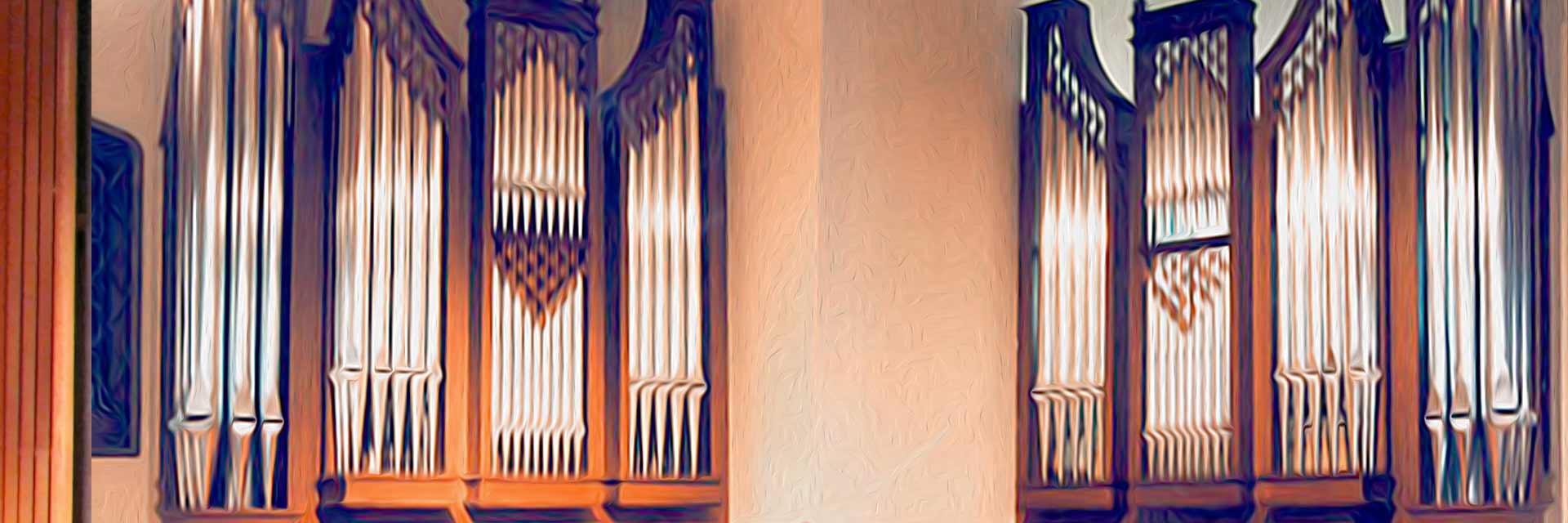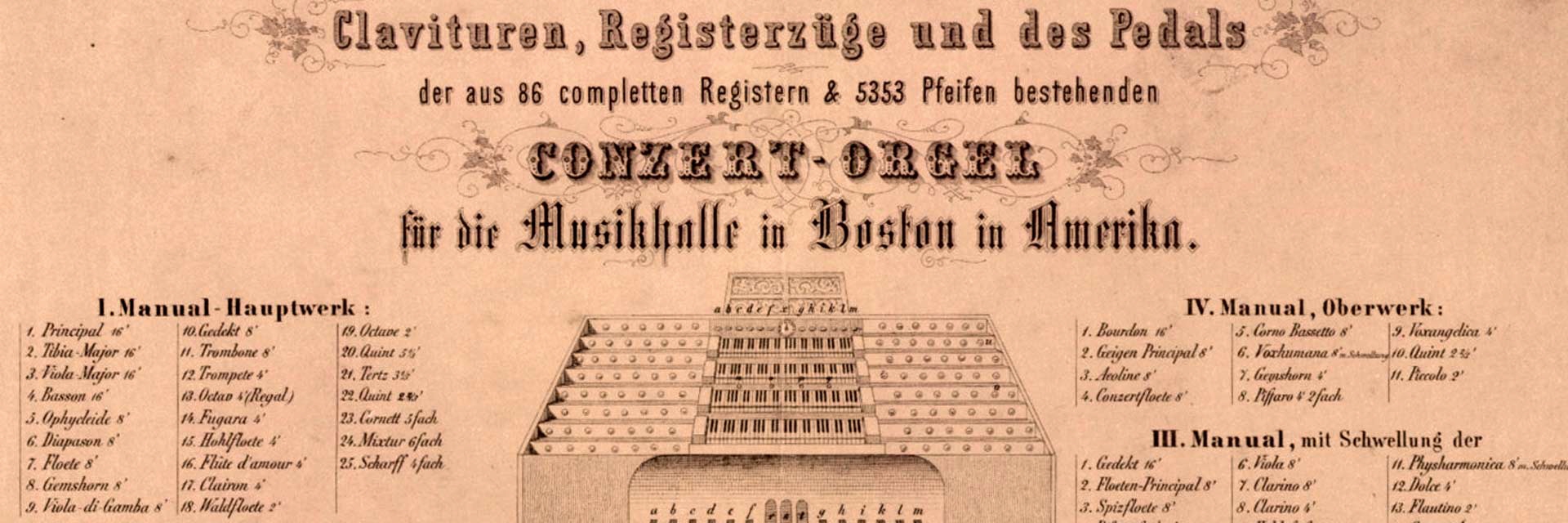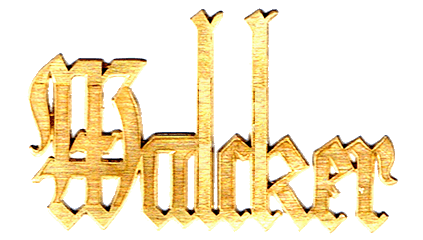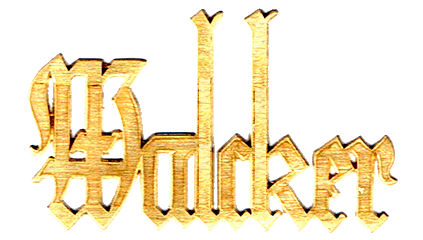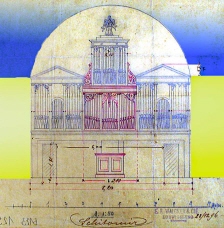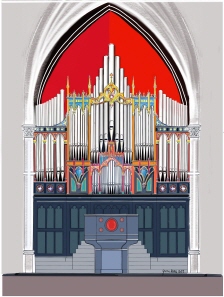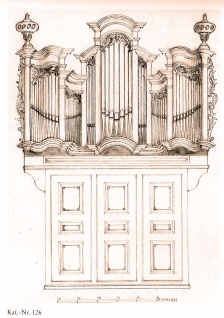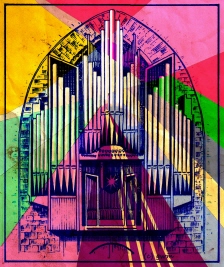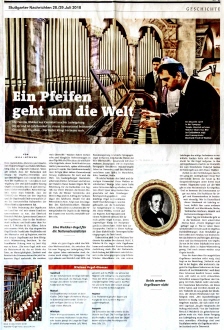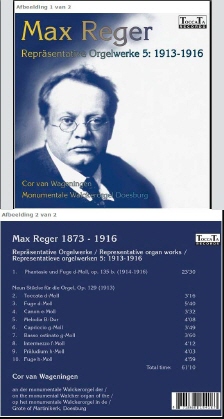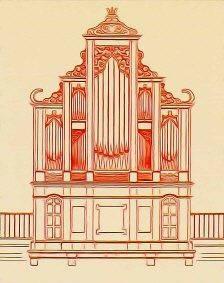Eberhard Friedrich Walcker (1794-1872)
IN SEARCH of the REGER ORGAN
EBERHARD FRIEDRICH WALCKER
Kurt Lueders 1981 AGO
(Kurt Lueders graduated in 1972 from Yale College,
where he was an organ student of Paul Jordan and Philip Prince)
(edited January 14th 2001 /gerhard walcker)
IN 1833, THE SAME YEAR in which Aristide Cavaille-Coll received the contract for the Basilica of St. Denis, a relatively obscure provincial organbuilder in Germany completed a monumental instrument for a prestigious Frankfurt church and thereby set the pace for his profession during the entire remainder of the century. Although St. Paul's Church in Frankfurt is now virtually empty, its name is remembered among organists as the major point of departure in the career of the Swabian, Eberhard Friedrich Walcker, who in turn is automatically associated with the development of the German Romantic organ. That Walcker did not create ex nihilo the Romantic organ is clear from an even cursory examination of the Buchholz organ in Greifswald (THE AMERICAN ORGANIST, September 1980), completed some two years earlier. Indeed, Buchhoiz's instrument may represent more of a stylistic divergence from the venerable tradition of his region than does the Pauluskirche from Walcker's own heritage. As in the case of Cavaille-Coll at St. Denis, the rare combination of innate creative genius, a family tradition of high craftsmanship, a daring conception with all the risks it implied, plus simple fortuitous timing, galvanized the organ world with a showcase of technical and aesthetic possibilities appealing to musician and artisan alike.'
Probably what captured the imagination of contemporary musicians was, above all, the Frankfurt organ's monumentality and the decidedly scientific considerations underlying its conception. (Again, the parallel to St. Denis is remarkable.) Although tenders from organ-builders were solicited for the organ as early as 1824, it took three years before the contract was signed, the field of candidates having been narrowed from fifteen to nine, then three (namely Schuize, Overmann Brothers of Heidelberg-apparently a "local favorite"-and Walcker). When the prestigious commission, composed of Rinck, Julius A. Andre and the church organist Petsche, sent out a model specification, the 32-year-old builder daringly took exception to its conservatism, in one of the fullest expressions ever of nineteenth-century tonal ideals, a sort of prophetic Romantic Organ Manifesto:
• Superior insights of late have dispensed with all this jumble of sounds and hold fast to whatever makes the tone pure, determinate and certain, to the unity of tone, which, however, does not
preclude the sparing application of just a few quints and tierces, should such be desired. The general preference is to have many stops, of which each may be used individually by the player for the performance of a melody, but which in addition to their unity offer at the same time a rich variety of character. The beauty of an organ is not to be seen in mere shrieking [Geschrei], least of all in confused shrieking:
this we have gotten away from. It rather consists in the tone's having a grand, indeed I should say sacred character. . . ."'
It was the spectacularly successful fulfillment of this novel ideal that singled out the Pauluskirche organ as a landmark even in its own time. As an anonymous reviewer for the Allgemeine Musikalische Zeitung put it: "Since such large new organs are now seldom built, the matter seems to me doubly worth the attention of the musical public."3 It seems safe to say that no organ for nearly another generation (until Ladegast's rebuild of the Merseburg Cathedral organ in 1855) so incarnated the strivings of the age. This is surely more important than the constructional details (double pedal, Vogler-like mutation series, free reeds, etc.), the significance of which has at times been misconstrued. Exactly as in the case of Cavaille-Coll during and after St. Denis, Walcker very quickly "distilled" a more standard style, so that the really lasting novelty of the Frankfurt instrument was in aspects which show only vaguely through the paper specification (unless one knows how to read between the lines).
For example, it is easy to see the two pedalboards as a polyphonic device, whereas (although its potential therein did not totally escape composers such as the Stuttgarter Immanuel Faisst) its true purpose was clearly the rather mundane one of providing two dynamic levels without excessive stop changing. (We shall meet many an offspring of this concept, culminating in the automatic pedal shift of the late Reger aera.) The mutation scheme was indeed borrowed from Vogler, with whom Walcker had direct contact during his years of apprenticeship." Its lasting effect, however, was obviously not in the adoption of numerous mutation ranks into the Romantic organ, but rather in their consolidation into the wide-scaled Terz-mixtur or Kornettmixlur without breaks, one of the features that filtered upwards from Southern Germany into the North and are crucial to the authentic "Reger sound." As for free reed stops, their importance as swell devices (by variable wind pressure) may be overplayed. "Absolute" tonal considerations seem to have been the ultimate determining factor in their success: "schwellbar" or not, their sound simply blended better with the rest of the tonal palette.
The farthest-reaching innovation Walcker brought about, controversial even in his own era, made its entry fully a decade after the Frankfurt masterpiece. Made aware of the drawbacks of the slider wind-chest in adverse climates by several major contracts in Russia, he began around 1842 to work seriously with the concept of the stop-channel chest. His acquaintance therewith clearly came from old organs he knew in his region, in which sparing use of the principle had been made in order to get around large pipes' tendency to rob wind.5 It is to th s day not entirely clear whether Walcke''s exploitation of his discovery was based on a deep conviction of the chest's artistic superiority, or issued from an urge to play up his growing progressive, innovative image. The first attempts were not all that conclusive and, furthermore, the new design turned out to be more expensive to produce than the slider chest. In .any case, the new concepts of "Walcker's improved spring chest"6 quickly took over the workshop and spread to other builders in the area within a decade. Its penetration into Central and North Germany was much more gradual, but inev table.7
Eberhard Friedrich Walcker's organs have in general fared very badly indeed at the hands of subsequent generations, and may be considered a nearly extinct species. Most other great nineteenth-century German builders worked until the end of the century, sometimes well into the twentieth; but Walcker created his last important organ in 1862, for the Boston Music Hall. Hence, his instruments tended to have an antique air about them that did not sit well with the progress minded. The firm, once taken over by his sons, was seized by a "bigger-and-better spirit" more pronounced than before. An element of industrialization and commercialization gradually got the upper hand (at least in contrast to the father's enterprise, which despite its size basically retained the family, moreover the pious Christian family, as its structural model); this "Weltanschauung" virtually inundated the German organ world. Consequently, the name Walcker has most often been associated with the prodigal organs manufactured under the influence of "Wilhelmism" after 1870. It is, however, important to distinguish between the periods, and for this reason the production of the third and fourth Walcker generations will be discussed later.
One outstanding monument still stands to Eberhard Friedrich Walcker's genius and high standards, the 27-stop organ (1845) of Hoffenheim near Heidelberg. A miraculous escapee among the countless victims of "enlightened" organistic as well as belligerent military campaigns of the last several decades, it deserves the term historic organ as much as any instrument on the Continent, all the more thanks to an exemplary restoration by Steinmeyer in 1974. Admittedly, the instrument is everything the neo-baroque organ is not (except for its purely mechanical action, at least), and one may easily comprehend the aversion to its kind on the part of those saturated with Orgelbewegung ideals and sonorities. To those without preconceived ideas, however, it can open totally new horizons of organistic thought. The stoplist tells only part of the story:
MANUAL I
Salicional 16 Principal 8 Gedekt [sic] 8 Floete 8 Violadigamba 8 Quint (wood) 5'/3 Octav 4 Rohrfloete 4 Traversfloete 4 Octav 2 Mixtur IV Trompete 8
MANUAL II (Hinterwerk)
Principal 8 Doppel Gedekt 8 Doice 8 Holzharmonika 8 Spitz-Floete 4 Flute d'amour (wood) 4 Nasard 22/3 Flautino (conical) 2 Physharmonika 8
PEDAL
Violin-Bass 16 Sub Bass 16 Octave-Bass 8 Violoncellbass 8 Floeten Bass 4 Posaune 16
Couplers ll/l and I/Pedal (stopknobs) Expression pedal for Physharmonika
For all its tonal differentiation, this organ is not a subtle one in the sense of symphonic finesse and extremes of color. It lays all its cards immediately on the table and, in the best Southern German tradition, invites the organist to group them in fairly large masses.
speaking pipes of a given note; this is universally seen as advantageous to tonal blend. In the cone-valve or other stop-channel chest systems, the pipes of any given note are separated from each other at all times, whereas the pipes of any given srop may communicate. In one case the blend is "horizontal" and, logically, advantageous to polyphony in the narrow sense of separation of voice parts; in the other it is "vertical," favoring homogeneity in chords. Judgments about the two systems should concern practical "appropri-ateness" and not theoretical "superiority," and Hoffenheim is the ideal place to explore one's own rapport with such action.'
Only the countless fascinating tonal details divert attention from the extraordinary beauty of this organ; but since such overall beauty is hard to describe in a few lines, some of the details may suffice. Most unforgettable is the Physharmonica stop, of which only a handful of rare specimens survives. Borrowed directly from Abbe Vogler, this free reed stop (here housed alone on gallery level behind the trackers) has no resonators but is enclosed in a sort of box whose lid can be closed by a pedal at the same time wind is gradually cut off, producing a crescendo of enormous range for a single stop. The effect is largely that of a harmonium and can therefore, without careful handling, resemble that described in caricature by Vogler's own detractors, namely a singer being progressively strangled while performing. The stop's curious nasal timbre is useful as an ensemble element as well as in solo passages, and is "backed up" by the even more fantastic Holzhar-monika, whose breathy and "woody" tone it vaguely resembles. The latter is a wooden flue stop with a downright recklessly narrow scaling (one inch at 4' C!), perfect for plaintive and calm textures like Brahms's "Es ist ein Ros' entsprungen."
A chapter in themselves, the many flutes complete the roster of wooden stops. Most remarkable are the "Gedekt" on Manual 11-Walcker's father already was renowned for his doppelflutes" of which this is a descendant-and the overblowing (from middle C) Traversfloete which achieves a stunning imitative effect by a round mouth.
An unexpected French influence is to be found here and there, such as in the construction of the manual trumpet stop with double blocks. Curiously, the open, medium-scaled Manual II stop marked "Quint" on the pipes, is called "Nasard" at the console: oversight, lack of coordination in the shop, or conscious effort to appear up-to-date? In any case, the sounds themselves are not made to fool anyone:
one hears in particular a typical German trumpet tone, rather thin and unassuming. The power elements are to be found in the principals and the "reedy" Terzmixtur. Despite the Farbmerk character of the second manual, it can, to a great extent, hold its own dynamically against the first. Tonally, though, its narrow scalings in the best Romantic tradition make it much less weighty than Manual I. How refreshing it is to break away a bit from the Quin-tade/Gedecktpommer/Bourdon complex in the manual 16' range! A thorough examination of the specification10 will indeed reveal, even on paper, a brilliant overall conception in which unity and variety are perfectly balanced and each stop's musical function clearly defined. The tutti is homogeneous, noble and imposing, with the astounding clarity in strength which typifies the German Romantic organ, whether from 1840 or 1910.
Thus the Hoffenheim organ is unquestionably one of the most crucial instruments left on West German soil today. True, there is no individual unique element about it: one meets with overblowing flutes, cone-valve chests, detached consoles, even a Physharmonica or two all over the country. But, thanks to this treasure (and to those who saw to its far from automatic preservation), the possibility will always exist to judge Eberhard Friedrich Walcker's ability by something more than a few hopelessly scattered stops and the historian's disparaging accounts. One of the greatest organbuilders of all time deserves at least that much.w
NOTES
1. Virtually all of the standard reference works give the specifications of the Pauluskirche organ (e.g., P. Williams, The European Organ, pp. 94-95; W. Sumner, The Organ, p. 486; P. G. Anderson, Organ Building and Design, p. 256; W. Metzler, Romanlischer Orgelbau in Deutsch-land, p. 55-56; H. J. Moser, Orgelromantik, p. 80ff.; E. F. Richter, Kalechismus der Orgel (4th ed.), p. 191; H. Riemann, Kalechismus der Orgel, pp. 166-68; etc.)
2. Quoted from Walcker's project ol October 25, 1826, in Johannes Fischer: Das Orgelbauerge-schlecht Walcker in Ludwigsburg. Die Menschen -Die Zeiten-Das Werk, Kassel, 1966, p. 28 (trans. by present author).
3. Allgemeine Musikalische Zeitung, No. 40 (1833), p. 669 (trans. by present author). Particularly admired were the twelve bellows, each 14' x 5'A', which allowed a true tutti of a good 70 stops with no "alteration" in the tone. Walcker further achieved an unprecedented fullness in 32' tone here, thanks to a chance acoustical discovery.
4. Vogler was to play a concert in Cannstatt,
where the workshop of Walcker's father was, and had the organ there modified-perhaps even "simplified"!-for his "productions." (See Fischer, op cit., p. 26.)
5. The organbuilder Hausdorffer from Tubingen built several such chests in the eighteenth century, which Walcker could not help but come into contact with, particularly in Esslingen City Church (1754).
6. Of course, the true spring chest is a stop-channel system; the old, one might say the traditional, confusion comes from the superficial similarity of pallet construction between the latter and certain variants of the cone-valve chest.
7. See the magnificently documented study by Hermann J. Busch, "Zwischen Tradition und Fortschritt-Zu Orgelbau, Orgelspiel und Orgel-komposition in Deutschland im 19. Jahrhun-dert," in Alfred Reichling (ed.), Mundus Organum. Festschrift Walter Supper, Berlin, 1978, pp. 63-91 and in particular 77-78.
8. A discussion of the playing characteristics of such actions must, for reasons of space, be reserved for later chapters. See also the description of the organ in Paris, St. Eugene (MUSIC, March 1976, pp. 44-45).
9. Justin Heinrich Knecht mentions this in his famous Complete Organ Method, which shows that the name Walcker was regionally known before the turn of the nineteenth century. But the organs built by E. F. Walcker for places even as relatively close as Hoffenheim and Frankfurt were considered products of "foreign" (auslan-disch) manufacture.
10. cf. Hans Gerd Klais, "War die Kegellade ein Irrtum?" in Mundus Organum . . . (note 7 above), pp. 171-84. (English translation by Homer D. Blanchard, "Was the Cone-valve Chest a Mistake?" in The Tracker, Vol. 21, No. 3, Spring 1977, pp. 14-18; Vol. 21, No. 4, Summer 1977, pp. 10-14.)
Kurt Lueders graduated in 1972 from Yale College where he was an organ student of Paul Jordan and Philip Prince. He lives in France at present where his teachers have been Maurice Durufle and Edouard Souberbielle. In addition to contributing articles to American and European organ publications, Mr. Lueders edits La Flute Harmonique, the only review in the world devoted exclusively to the nineteenth-century organ.
